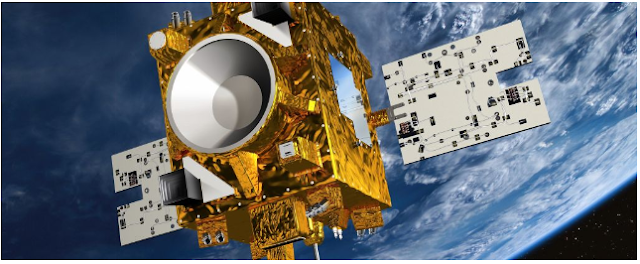The most rigorous examination of a fundamental idea in Einstein's general theory of relativity has recently been completed.
An worldwide team of researchers measured the accelerations of two pairs of free-falling objects in Earth's orbit using a specially made satellite. The accelerations didn't differ by more than one part in 1015, according to the results based on five months of data, ruling out any violations of the weak equivalence principle at that scale.
The weak equivalence principle states that, in the absence of external forces, all things accelerate uniformly in the same gravitational field, regardless of their mass or composition.
The most famous and effective demonstration of it may have taken place in 1971 when astronaut Dave Scott simultaneously dropped a hammer and a feather from the same height when he was standing on the moon. The feather fell to the Moon's surface at the same rate as the other object because there was no air resistance to slow it down.
The new investigation, MICROSCOPE, supervised by the late scientist Pierre Touboul, was a little more exacting than Scott's work. From April 25, 2016, through the spacecraft's deactivation on October 18, 2018, it involved a satellite orbiting Earth.
The researchers conducted numerous experiments employing masses suspended in free fall during this time, yielding a total of five months' worth of data. Pairs of test masses with various compositions, including titanium and platinum alloys, made up two thirds of this data. A reference pair of masses with the same platinum composition was used in the final third.
The two test masses were maintained in the same position with respect to one another by electrostatic forces applied by the testing apparatus. The equipment would detect changes in the electrostatic forces keeping the masses in place if there was any difference in the acceleration, which is measured by the Eötvös ratio.
Early findings from 2017, which found no violation of the weak equivalence principle down to an Eötvös value of 19 x 1015, were encouraging. However, the satellite was still operating and generating data, indicating that more work remained to be done. These preliminary findings are confirmed by the whole dataset, which limits the Eötvös value to 1.1 x 1015.
This is the weak equivalence principle's current tightest bound, and it is doubtful that it will be soon surpassed. It entails additional limitations being placed on the junction of general relativity and quantum mechanics, two regimes that function according to different principles, allowing scientists to continue to rely on general relativity with greater confidence than ever.
Astronomer Gilles Métris of the Côte d'Azur Observatory in France says, "We have new and far better limitations for any future theory, because these theories must not break the equivalence principle at this level.
Given that the technology, which was created to function in the microgravity environment of Earth orbit, could not be tested before launch, this is a remarkable outcome. The team can use the findings to create a test that will be even more demanding now that the MICROSCOPE project has been successfully finished.
These experiments will aid in examining the restrictions of general relativity, a theoretical model that explains gravitation in actual space-time. On atomic and subatomic sizes, however, quantum mechanics prevails over general relativity. For a long time, scientists have been attempting to explain the differences between the two. Identifying the precise point at which general relativity fails may be one approach.
We now know that for weak equivalence, that breakdown does not happen down to one part in 1015. The next edition of the satellite could be improved in specific ways to probe it down to a level of one part in 1017. It will take some time to complete it, though.
According to French national aerospace research centre physics engineer Manuel Rodrigues, "We don't see any improvement with a space satellite experiment for at least a decade, possibly two" (ONERA).
However, we believe that for the time being, these outcomes will be sufficient.
Reference: Physical Review Letters





0 Comments